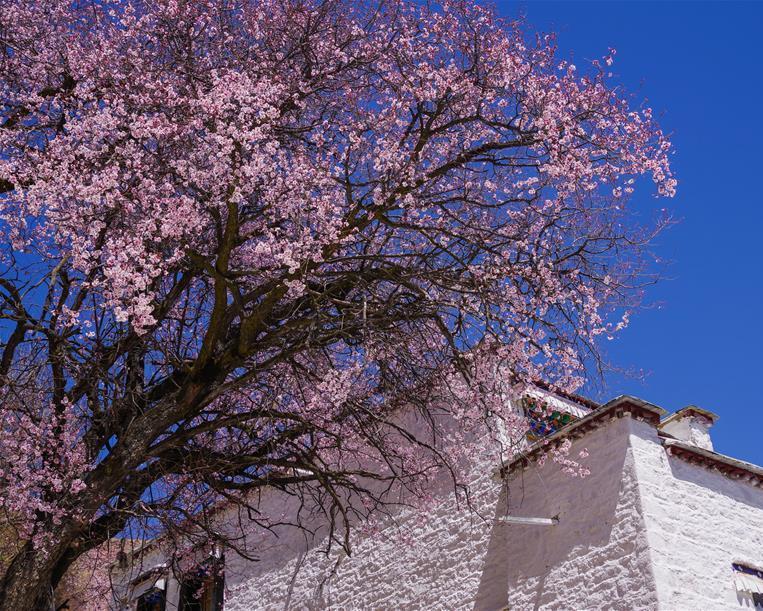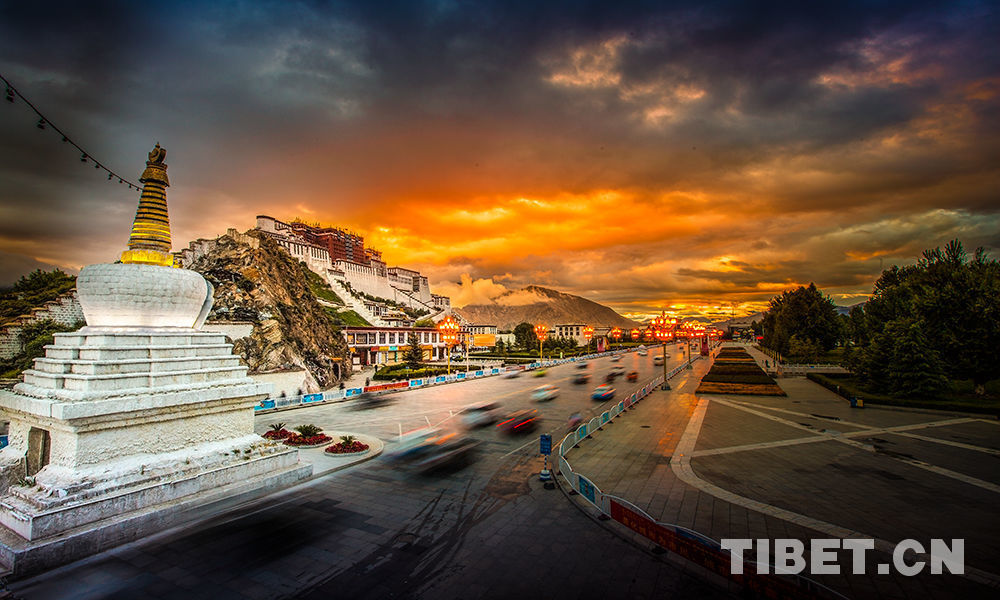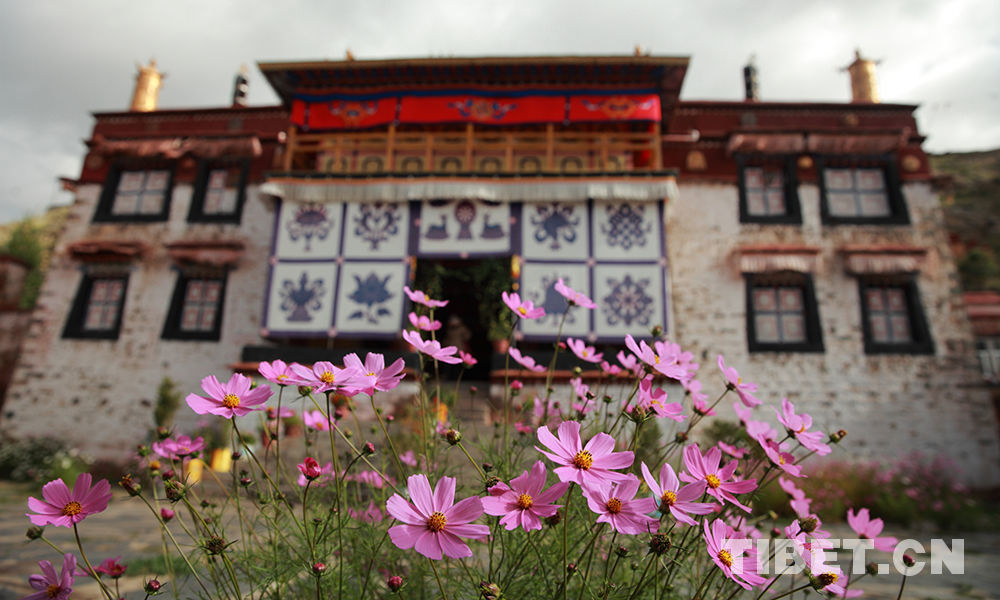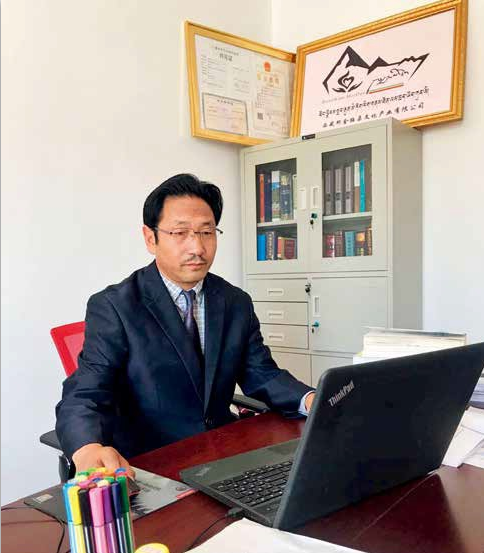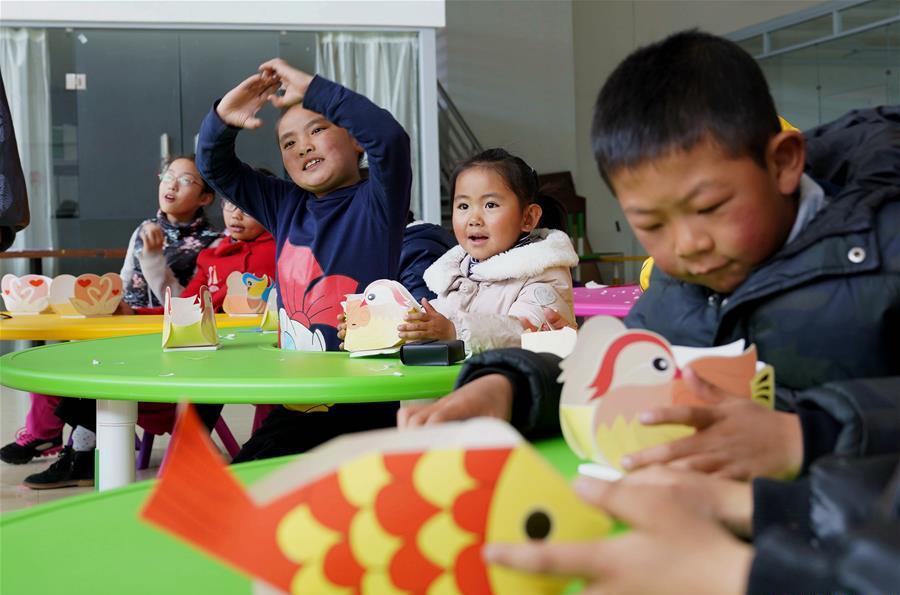Rinpoche and his son photograph changes of Tibet

Wangchuk Dorje
In 1925, the 10th Demo Rinpoche helped a distressed a Nepalese when having a close-door meditation in a cave on the outskirts of Lhasa. In return, the Nepalese taught him photography and gave him a wooden camera as a gift. Thereafter, the 10th Demo Rinpoche, who was appointed one of the four Hutuktu (Rinpoche of the highest level) by the Qing (1644-1911) imperial court, became the first Tibetan photographer.
That year the 10th Demo Rinpoche was 25 years old. Up until his death in 1973 he took tens of thousands of photos, but only some 300 remain today. They show unique images of a far-away era in Tibet. His photography has also been passed on to future generations. His son Wangchuk Dorje is a celebrated photographer,member of the Tibetan Photographers' Association.
"In the 20th century, the year 1951 was a watershed when Tibet went through huge transformation. For our family, this transformation reflected my father's and my own dissimilar fates and stories." Wangchuk Dorje said, "Both of our photos reflected the contrast between the old and new Tibet."
"My father was a photography fan in the first half of the century. His camera lens recorded images of Rinpoches, nobility, Tibetan officers,soldiers, serfs, the gathering of the Buddhist assembly, as well as city streets and village roads. His photographs are a reflection and record of old Tibetan society," Wangchuk Dorje said.
1951 saw the peaceful liberation of Tibet. Demo Rinpoche opened a granary to subsidize the People's Liberation Army into Tibet During the second year on a summer day, the central representative, Zhang Jingwu, made a special trip to visit Demo Rinpocheand his family. He praised them for their patriotic action. Their group photo is now a famous Chinese historical photograph.
Wangchuk Dorje 's professional photography career began in 1980 after the reform and opening up policy in China. But his fate with photography traces back to his childhood. He said: "In 1956 my parents came back from a trip to India, he gave me a camera. With this camera I took some pictures for the first time."
"My father's and my photos are very different. For example the way we used photography equipment and the composition. But the biggest difference is the era and the features of people," he said.

Wangchuk Dorje's Masterpiece "Spring of an Ancient Temple"
"While sorting through my father's old photos, I've tried to find my father's shooting locations and angles. Putting two photos which were taken in different era but the same location is very interesting," Wangchuk Dorje said.
Demo Rinpoche took a panaorama of Lhasa in the 1940's at the Yaowang Mountain. In 2005, Wangchuk Dorje shot a new panorama again from the same perspective to remake the old photo. But the panoramic photo he took was incomplete.
The two photos' forms are strongly contrasted. Lhasa has not only gotten bigger, but also in the past Lhasa only had low-rise houses surrounding the Potala Palace and Jokhang Temple-the rest of the surrounding areas were vast and starkly empty. New photos show the magnificent renovation of the Potala Palace and a Lhasa full of beautiful buildings with broad streets.
He believes one of the most fundamental changes in Tibet is the changeof people, which you can see clearly between differences in both his and his father's photos.
"The backgrounds became cleaner and brighter while the clothes people wear looks more gorgeous and beautiful.. The more important changes are people's expressions from drab to vivid, and their eyes look clearer," he added.
"Spring of an Ancient Temple" is Wangchuk Dorje 's masterpiece. The photo was taken in 1984 in the beginning of China's reform and opening up. At that time a large number of temples in Tibet were repaired and religious activities had resumed. In the Tashilhunpo Monastery in Shigatse City, Wangchuk Dorje snapped a photo of the hall after the end of a sutra chant.
Different people have different comments and opinions on this colorful photo's ideological and artistic value. My heavy heart is lightened by only one thing-I can use my camera to record my hometown including its history, today and tomorrow to let more outsiders have a better understanding of it," Wangchuk Dorje said.
Your Comment
Name E-mailRelated News
-
;



